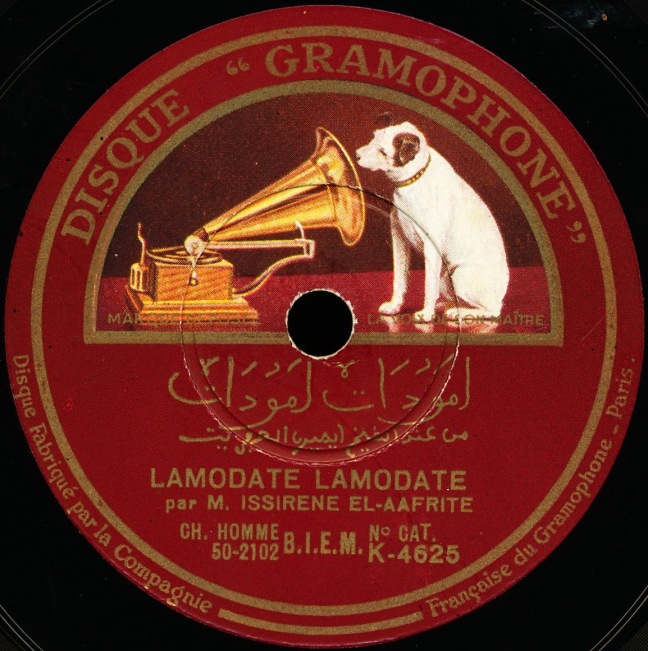On a great number of his records, the Tunisian Jewish artist known as Cheikh El Afrite (1897-1939) narrated a changing world around him. Indeed, the musician born Israel Rozio (and who was sometimes referred to as Isserine El-Âafrite, as on this disc) was the popular bard par excellence of the interwar Maghrib. To be sure, his music captured a moment. It did so with biting satire and salaciousness. Thus derived his stage name, meaning something like “the shaykh of the devilish,” which (almost certainly) owed to the mischievous manner in which he narrated subject matters that dealt with unhappy marriages and disappointed parents. In other words, Cheikh El Afrite sang about the Tunisian modern experience and its attendant pitfalls. And he did so prolifically for a host of labels until his untimely death in 1939 at the age of forty-two.
On Lamodate Lamodate (the Arabic plural for the French “la mode”), recorded for the Gramophone Company c. 1932, Cheikh El Afrite addresses his daughter (binti), a comely beauty with black eyes (ʿayunik sawda) who he fears is being seduced by “la mode”––that which is current and fashionable. Backed by Messaoud Habib on the piano, Albert Abitbol on the violin, and El Malih on the darbuka, El Afrite implores her to listen to her father and mother lest she think of doing the unthinkable: cutting her hair short, for example, or donning make-up. Of course, the unthinkable was what many young Tunisian women were already doing. It is in this way––in inveighing against the bob and lipstick––that Cheikh El Afrite and his music provide us with Arabic-language insight into the potency, power, and pull of what we might think of as the age of the modern girl in the Maghrib.
I wish to thank Rim Temimi for taking an early listen to the record in question and offering assistance in translation.
Notes
Label: Gramophone
Title: Lamodate Lamodate
Artist: Isserine El-Aafrite (Cheikh El Afrite)
Issue Number: K-4625
Face Number: 50-2102
Matrix Numbers: OW 895-1 [Side 1] and OW 896-1 [Side 2]
Date of Pressing: c. 1932
